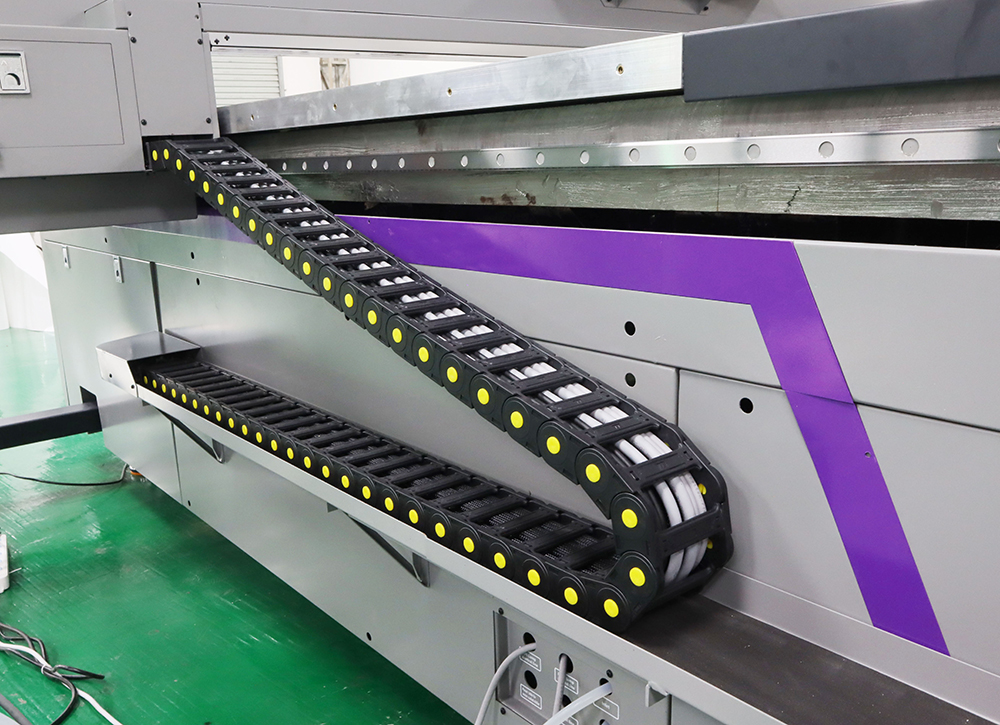How Does a UV Flatbed Printer Produce High-Quality Prints?
How Does a UV Flatbed Printer Produce High-Quality Prints?
In the realm of digital printing, UV flatbed printers have emerged as a game-changer, revolutionizing the way high-quality prints are produced across various industries. From signage and advertising to packaging and product decoration, these printers offer unparalleled versatility, precision, and efficiency. This article delves into the intricacies of UV flatbed printing technology, exploring how it achieves such remarkable print quality and why it has become a preferred choice for many businesses seeking top-tier printing solutions.

Understanding UV Flatbed Printing Technology
UV flatbed printers are a type of digital printing equipment that utilizes ultraviolet (UV) light to instantly cure or dry ink as it is applied to the substrate. This technology differs significantly from traditional solvent or aqueous-based printing systems, which require time for inks to evaporate or be absorbed by the material. The UV curing process enables instant drying, allowing for immediate handling and finishing of printed materials without the risk of smudging or bleeding.
At the core of a UV flatbed printer lies its ability to print directly onto almost any flat surface, ranging from rigid materials like glass, metal, plastic, and wood to flexible substrates such as vinyl and certain textiles. This versatility stems from the printer’s design, which features a flat, stationary bed where the substrate is placed for printing. The print head moves across the surface, depositing ink in precise patterns to create the desired image or design.
Key Components Contributing to High-Quality Prints
Several key components and features of UV flatbed printers contribute to their ability to produce high-quality prints consistently:
High-Resolution Print Heads: UV flatbed printers are equipped with advanced print heads that can achieve resolutions exceeding 720 dpi (dots per inch), with some models reaching up to 4000 dpi. This high resolution ensures that even the finest details and smallest text elements are reproduced accurately and sharply.
UV-Curable Inks: The use of UV-curable inks is a defining characteristic of UV flatbed printers. These inks are formulated to cure instantly when exposed to UV light, resulting in vibrant, durable prints that are resistant to fading, scratching, and chemical exposure. UV inks also offer a broader color gamut, allowing for more accurate color reproduction and vibrant, eye-catching graphics.
Precise Ink Deposition: Advanced inkjet technology enables precise control over ink droplet size and deposition, ensuring that ink is applied uniformly and accurately across the entire print area. This precision minimizes ink bleeding and pooling, resulting in crisp, clean lines and edges.
Variable Dot Technology: Many UV flatbed printers employ variable dot technology, which allows the printer to adjust the size of ink droplets based on the specific requirements of the image being printed. This capability enhances image quality by optimizing ink usage and reducing visible banding or pixelation.
Advanced Color Management: Sophisticated color management systems ensure accurate color reproduction by calibrating the printer to recognize and replicate specific color profiles. This ensures consistency across multiple prints and allows for precise color matching to branded materials or design specifications.
Flatbed Design and Material Compatibility: The flatbed design of these printers accommodates a wide range of substrate thicknesses and types, enabling direct-to-object printing without the need for intermediate transfer steps. This direct printing method eliminates potential image distortion and enhances color saturation and detail.
The UV Curing Process: A Key to Quality
The UV curing process is a pivotal aspect of UV flatbed printing that significantly contributes to print quality. As the ink is deposited onto the substrate, it is immediately exposed to high-intensity UV light. This light triggers a photochemical reaction in the ink, causing it to solidify or cure instantly. The cured ink forms a durable, smooth surface that is resistant to abrasion, water, and chemicals.
The benefits of UV curing extend beyond print durability. Because the ink dries instantly, UV flatbed printers can accommodate faster print speeds without compromising quality. Additionally, the lack of evaporation during the curing process makes UV printing more environmentally friendly than solvent-based systems, as it reduces volatile organic compound (VOC) emissions.
Applications and Advantages
The versatility and high-quality output of UV flatbed printers make them ideal for a wide array of applications, including:
Signage and display graphics
Product packaging and labeling
Point-of-purchase displays
Architectural and decorative panels
Automotive and transportation graphics
Fine art reproduction and photography
Advantages of UV flatbed printing include:
Quick turnaround times: Instant ink curing allows for immediate post-processing and shipping.
Durability: Prints are resistant to fading, scratching, and environmental factors.
Versatility: Ability to print on various materials and thicknesses.
Eco-friendliness: Reduced VOC emissions compared to solvent-based systems.
Cost-effectiveness: High-quality prints with minimal waste and maintenance requirements.
Conclusion
UV flatbed printers have transformed the printing industry by offering a combination of versatility, precision, and efficiency that is unparalleled in digital printing. The technology’s ability to produce high-quality prints consistently, across a wide range of substrates, makes it a valuable tool for businesses seeking to elevate their visual communications and product offerings. As technology continues to advance, UV flatbed printing will likely remain at the forefront of innovation, pushing the boundaries of what is achievable in digital printing and empowering businesses to make a lasting impression.
